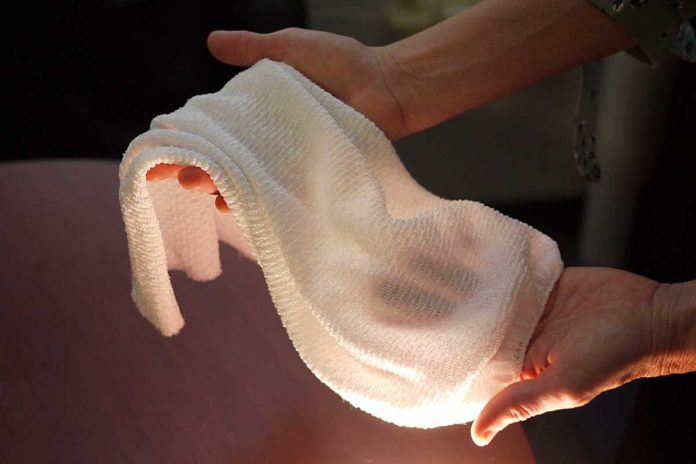As per the users’ comfort, fabrics are innovated in so many ways. Even after decades of innovation in fabrics with high-tech thermal properties that keep marathon runners cool or alpine hiker warm, there has never been a material that can change insulating properties of the fabrics in response to the environment.
Researchers at the University of Maryland have created a fabric that can automatically monitor the amount of heat passes through it with respect to the surrounding conditions. Infrared radiation is a primary way the body releases heat and is the focus of this new technology.
When the condition is warm or moist like sweating body in summer, the fabric allows the infrared radiations or radiant heat to pass through. Similarly, in cool and dry conditions, the fabric reduces the surrounding heat that escapes.
“This is the first technology that allows us to dynamically gate [regulate] infrared radiation,” said YuHuang Wang, a UMD professor of chemistry and biochemistry and one of the paper’s corresponding authors.
The researchers created this fabric from specially organized yarn that coated with the conductive metal. The strands of yarn get compact and activate the coating in hot and humid conditions. This changes the way the fabric interacts with infrared radiation to allow more heat. They refer to the action as “gating” of infrared radiation, which acts as a tunable blind to transmit or block heat.
The base yarn is developed using fiber which is made of two different synthetic materials. One of which absorbs water and the other repels it. The strands are coated with carbon nanotubes, which is a special lightweight, carbon-based, conductive metal. This material in the fabric both absorb and resist the water.
This fiber bends when the surrounding condition is warm and humid. That distortion brings the strands of yarn closer together, which does two things: First, it opens the pores in the fabric, that has a small cooling effect because it allows heat to escape. Second, and most importantly, it modifies the electromagnetic coupling between the carbon nanotubes in the coating.
“You can think of this coupling effect like the bending of a radio antenna to change the wavelength or frequency it resonates with,” Wang said. “It’s a very simplified way to think of it but imagine bringing two antennae to close together to regulate the kind of electromagnetic wave they pick up. When the fibers are brought closer together, the radiation they interact with changes. In clothing, that means the fabric interacts with the heat radiating from the human body.”
This fabric either block or allow the infrared radiations to pass through, according to the tuning. The reaction takes place almost instantly. The garment cools people down before they realize that they are getting hot. On the other side, the gating mechanism works in reverse to get warm.
“The human body is a perfect radiator. It gives off heat quickly,” said Min Ouyang, a professor of physics at UMD and the paper’s other corresponding author. “For all of history, the only way to regulate the radiator has been to take clothes off or put clothes on. But this fabric is a true bidirectional regulator.”
“This pioneering work provides an exciting new switchable characteristic for comfort-adjusting clothing,” said Ray Baughman, a professor of chemistry at the University of Texas who was not involved in the study. “Textiles were known that increase porosity in response to sweat or increasing temperature, as well as textiles that transmit the infrared radiation associated with body temperatures. However, no one before had found a way to switch both the porosity and infrared transparency of a textile so as to provide increased comfort in response to environmental conditions.”
Scientists are further planning to modify it more before it comes to market. But, as per researchers saying the base material is easily available and the carbon coating can be effortlessly added during the standard dying process.
“I think it’s very exciting to be able to apply this gating phenomenon to the development of a textile that has the ability to improve the functionality of clothing and other fabrics,” Ouyang said.
The paper, “Dynamic gating of infrared radiation in a textile,” Xu A. Zhang, Shangjie Yu, Beibei Xu, Min Li, Zhiwei Peng, Yongxin Wang, Shunliu Deng, Xiaojian Wu, Zupeng Wu, Min Ouyang, YuHuang Wang, is published in the February 8, 2019 edition of the journal Science.
This work was supported by the Advanced Research Projects Agency-Energy (ARPA-E), U.S. Department of Energy, as part of its “Delivering Efficient Local Thermal Amenities (DELTA)” program (Award No. DE-AR0000527). The content of this article does not necessarily reflect the views of this organization.
A paper on their work was published in in the journal Science.
